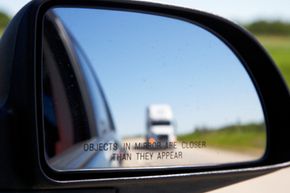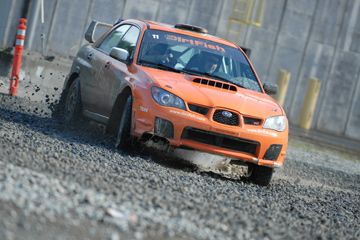"Oh, come on," you're saying to yourself as you read this headline. "Who doesn't know how to adjust their rear-view mirrors?" You sit in the driver's seat, twist a little knobby thing in the arm rest, and bam! Done.
If that's how you've been adjusting your mirrors -- if you bother to adjust them at all -- then you've also experienced that [heart-stopping moment on the freeway when you try to move into the left lane only to find someone's already there. And they don't want to share. They seem to think there's some kind of physical principal about two objects occupying the same space that you're about to violate. What a bunch of chickens.
Advertisement
That hiding place near your fenders, in case you aren't familiar with the term, is the pesky space known as the blind spot. It's the place at the rear flank of your car that you often just can't see in your mirrors. You can see a car coming up behind you in the center mirror mounted inside, and you can see that same car next to you as it passes through your window, but for a few seconds it slips into another dimension where you can't see a lick of it. Some cars have bigger blind spots than others, but you'd be surprised at how large a vehicle can be and still hide in that blind spot if your mirrors aren't adjusted correctly.
The technological wizards of the 21st century have developed systems to help detect cars hanging out in your blind spot and alert you to their presence. But the best defense is the old-fashioned proper mirror adjustment.
Advertisement

